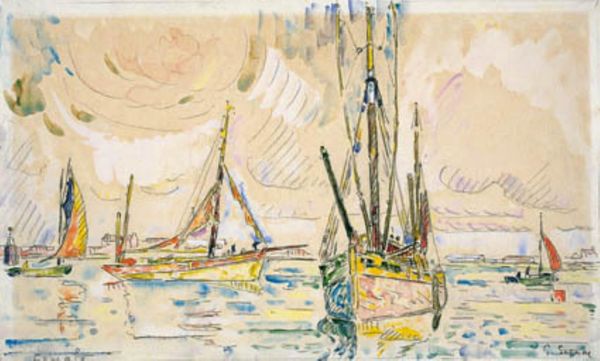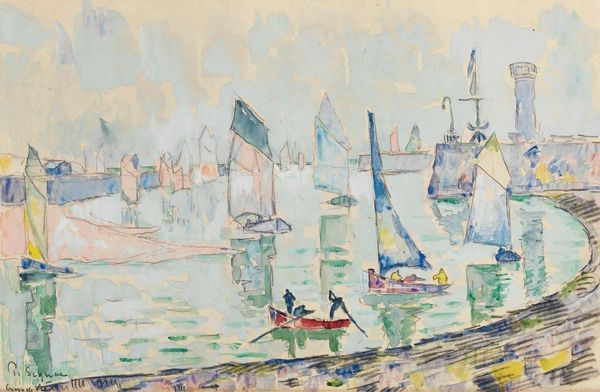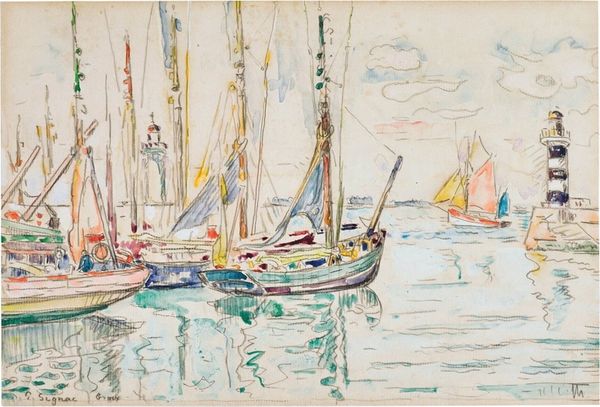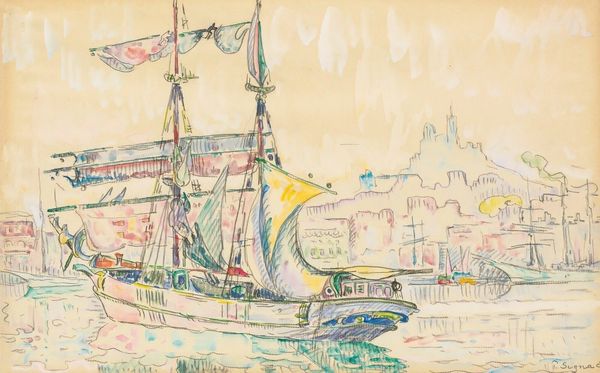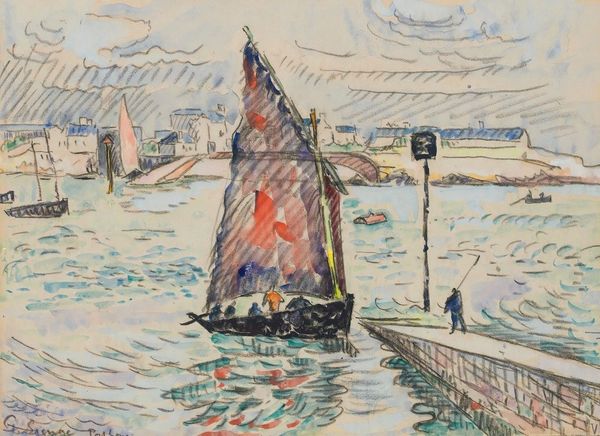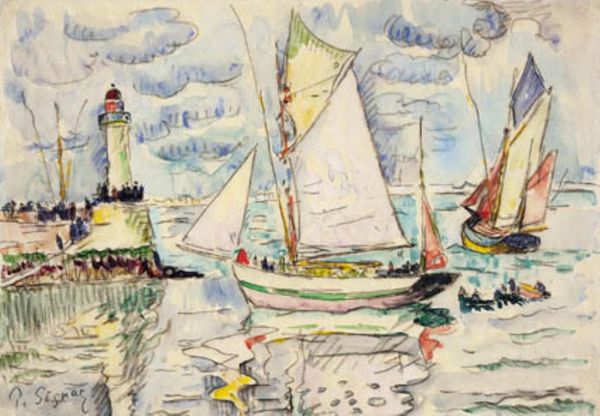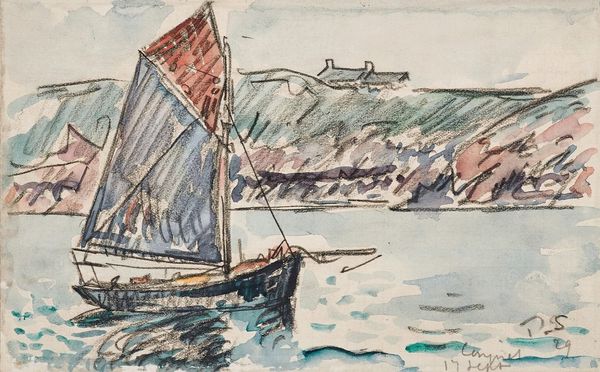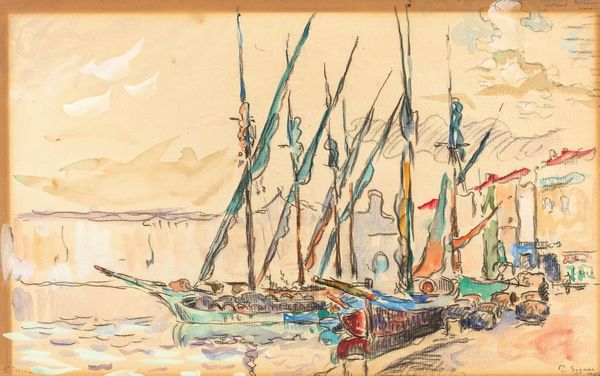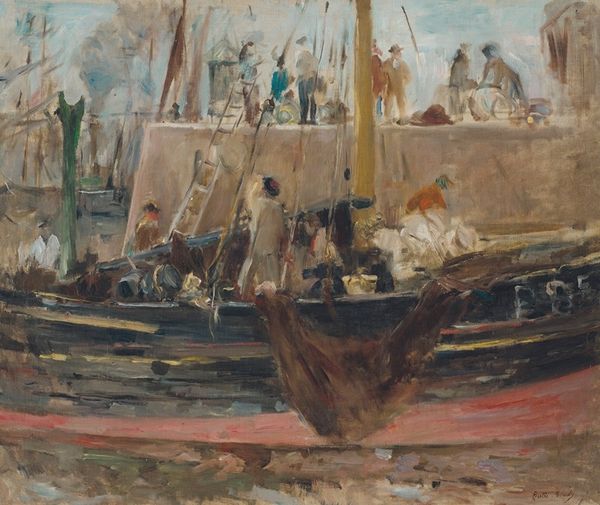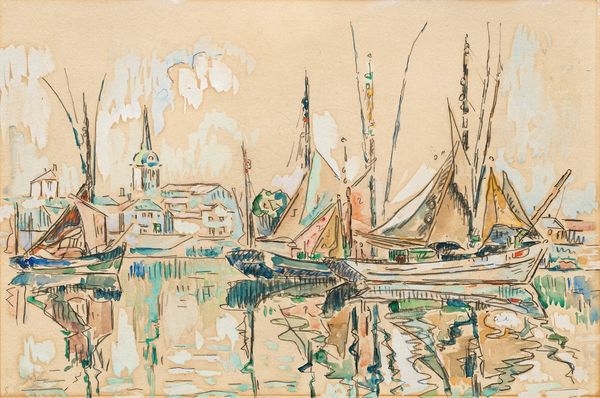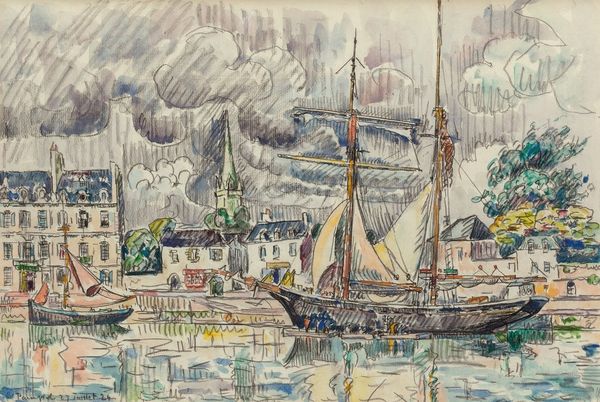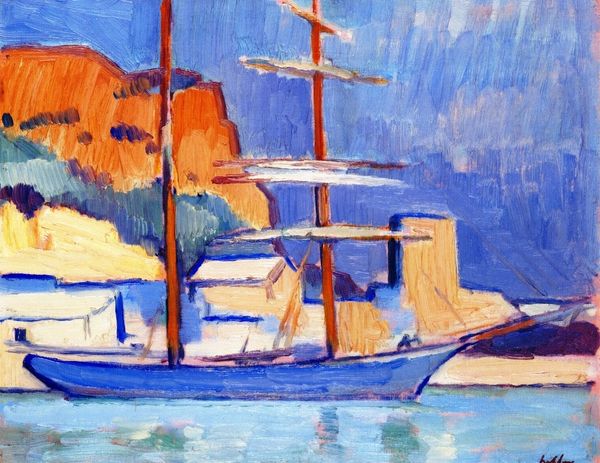
plein-air, watercolor, impasto
#
plein-air
#
neo-impressionism
#
landscape
#
watercolor
#
impasto
#
cityscape
#
post-impressionism
#
watercolor
Copyright: Public Domain: Artvee
Curator: Paul Signac's "Saint-Tropez, Voiles Au Sec", created in 1901, is a vibrant example of his Post-Impressionist explorations. It’s a watercolor piece, notable for its bold impasto application, a rather unusual choice for this medium. Editor: It’s fascinating! My initial impression is how dreamlike the scene is. The colors are luminous, and there’s this almost unfinished quality that gives it a sense of fleeting time, like a half-remembered moment. Curator: Signac's artistic journey placed him firmly within the Neo-Impressionist movement, following in the footsteps of Seurat. Think about the political implications: these artists weren't just painting pretty pictures; they were pioneering new visual languages that challenged academic norms. The loose, expressive brushstrokes, especially in the water, diverge from traditional painting. Editor: Absolutely. And consider the subject: Saint-Tropez. Then a relatively humble fishing village, not yet the playground of the wealthy it would become later in the century. This artwork exists as a powerful record of changing times, social values, and political ideologies linked to representations of work and leisure. Curator: We can explore the interplay between the individual artist and larger social forces when analyzing his approach. He’s known for plein-air painting, seeking natural light to explore the scientific study of color. This direct engagement allowed for more immediate records of locations, beyond controlled studio work. Editor: Indeed. There is something profound about the relationship of painting light, freedom and power. The composition with its verticality—the masts mirroring buildings—it's like the social aspirations of the turn of the century rising toward the sky. The reflections on the water appear, too, as distorted realities; a kind of resistance. Curator: Considering Signac’s later political leanings and active support for socialist causes, this piece allows us to read an engagement between art and sociopolitical spheres. Even something that seems picturesque carries a thread to deeper considerations. Editor: Exactly! It makes one consider how even the simplest scenes become charged with so much information on class, wealth, freedom of expression. Thinking through this artwork challenges us to reevaluate representations of pleasure across time, in relation to politics and place.
Comments
No comments
Be the first to comment and join the conversation on the ultimate creative platform.


